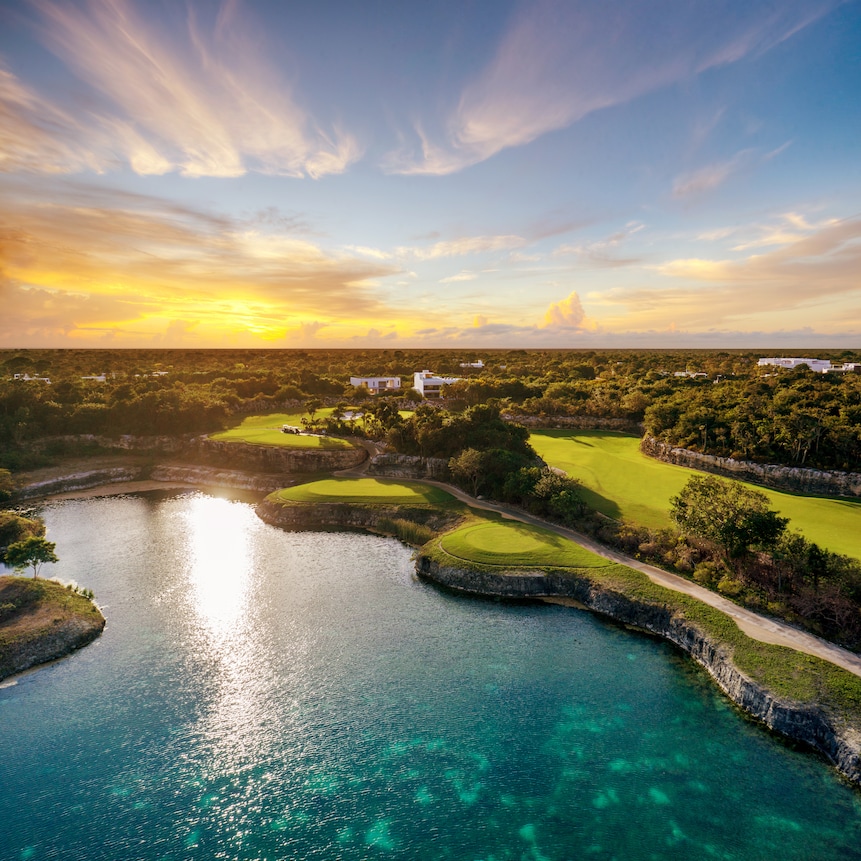Course Rankings
The best golf courses in Mexico

The 10th hole at Twin Dolphin Golf Club, a private course designed by Todd Eckenrode and Fred Couples, which opened in 2018 and has risen up our Best in Mexico rankings.
American golfers are finally seeing the light with Mexico. The demand has skyrocketed in recent years, Mexican tourism officials say, as U.S. residents have realized the quality of golf in their neighboring country. The scenery is exotic, the lodging is often top-notch and travel time can be even less than a domestic flight—meaning you can jam in more golf on your trip.
The first and biggest choice is really choosing between three seaside destinations: Los Cabos, Puerto Vallarta and the Riviera Maya. We hope our below list of the Best Courses in Mexico will help you choose. The fact is, there’s not a bad decision. There are pros and cons to both, and for the most avid golf travelers, you’ll find yourself wanting to return to each locale after taking one trip.
We urge you to click through to each individual course page for bonus photography, drone footage and expanded reviews. Plus, you can now leave your own ratings on the courses you’ve played … to make your case why your favorite should be ranked higher.















The PGA Tour debuted a new tournament venue in 2023, now serving as the host of the World Wide Technology Championship. El Cardonal usually plays backup to the Mexican resort’s other course, the Dunes, ranked 47th in the Golf Digest World’s 100 Greatest Courses. Though El Cardonal lacks the sensational seaside setting and prolific sand dunes that border the holes of the Dunes course (designed by Mark and Davis Love III, with associate Paul Cowley, in 2010), it has a notable caché of its own as the first course that Tiger Woods and his TGR Design studio built. Opened in 2014, El Cardonal sits in the desert uplands above the sister course with panoramic views of the Pacific Ocean and holes that run primarily north-south, meaning the prevailing coastal winds are typically crossing. Completed early in Woods' architectural career, El Cardonal strikes chords that the 15-time major champion has continued to use in his subsequent designs at Bluejack National in Texas and Payne’s Valley at Big Cedar Lodge in Missouri (Beau Welling was Woods’ lead designer at all three projects).
Explore our complete review here—including bonus photography and ratings from our expert panelists.












